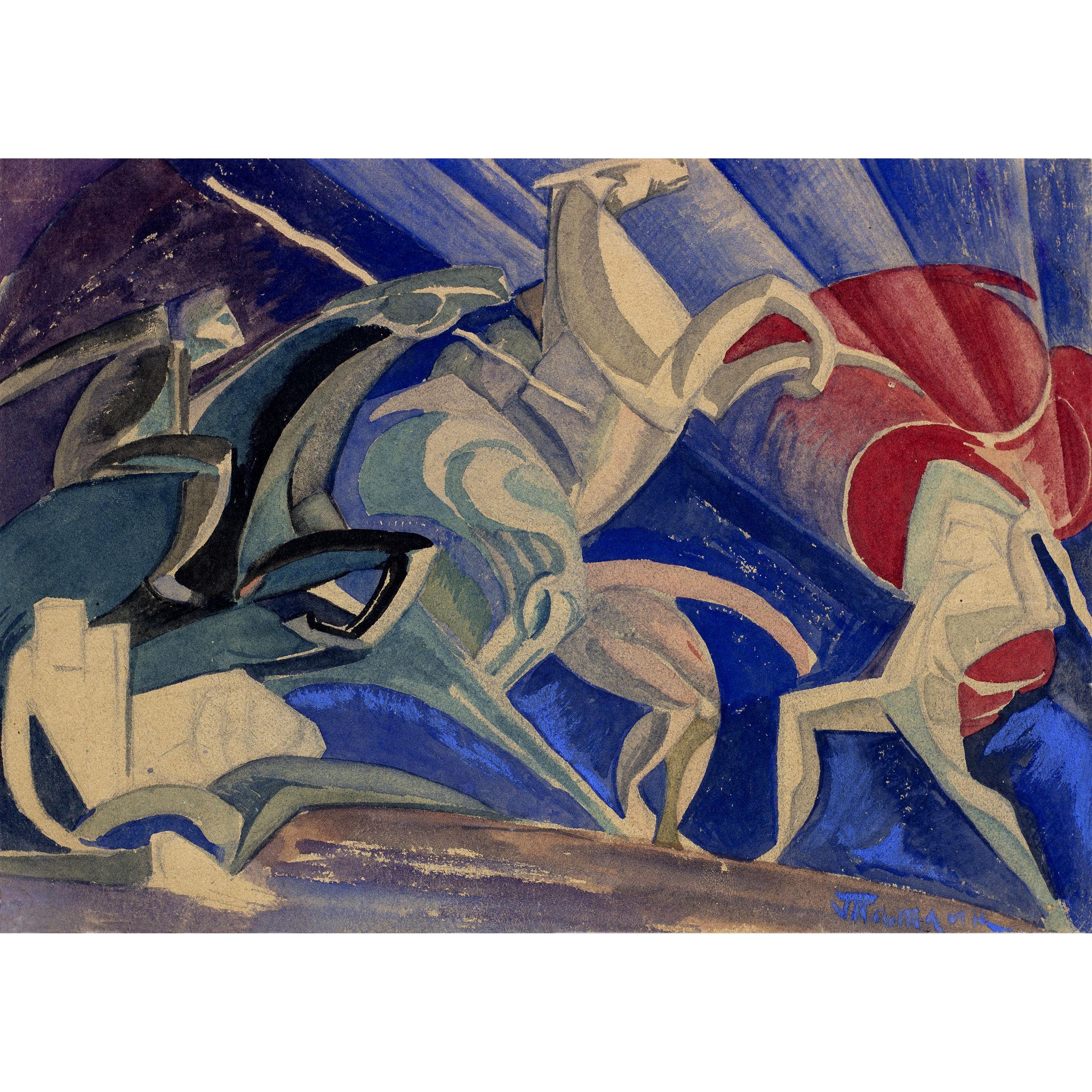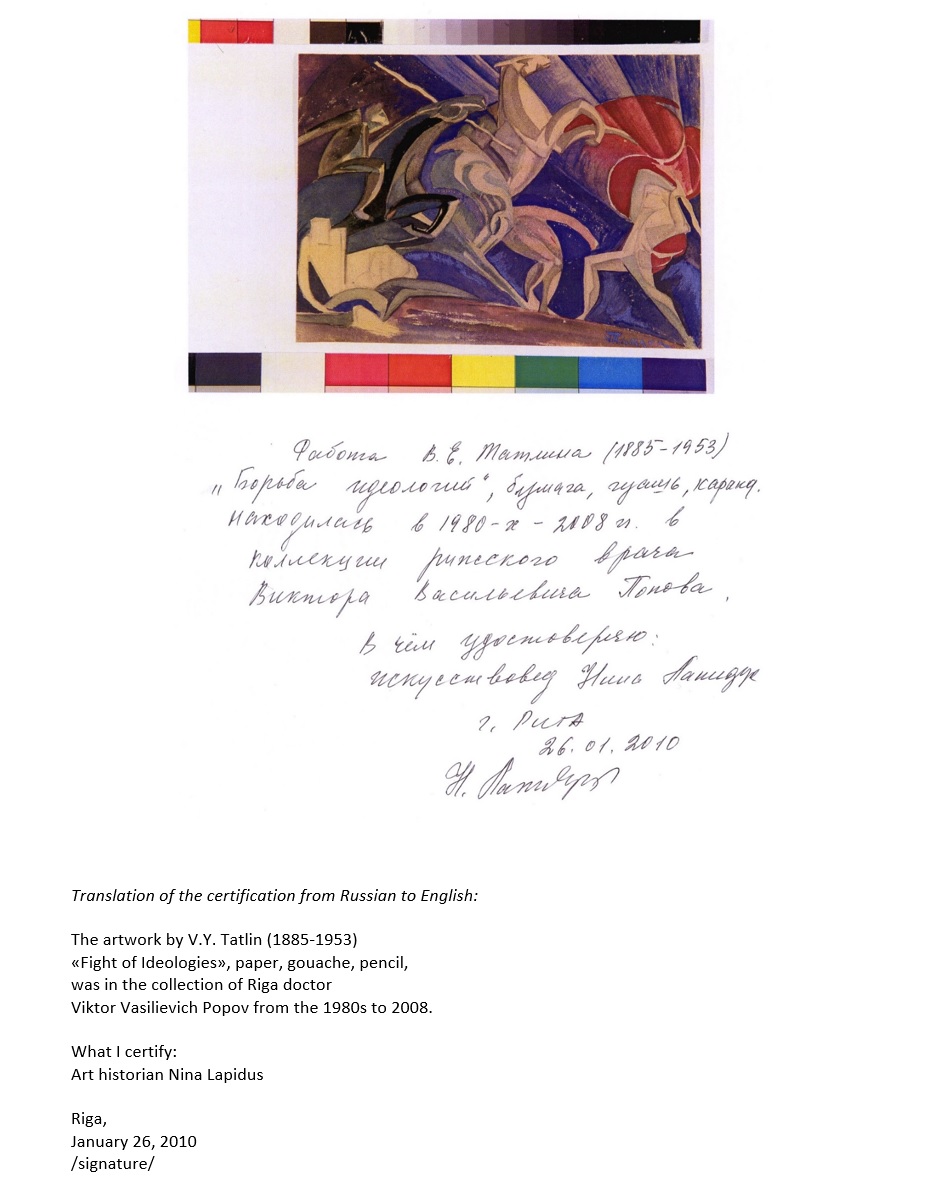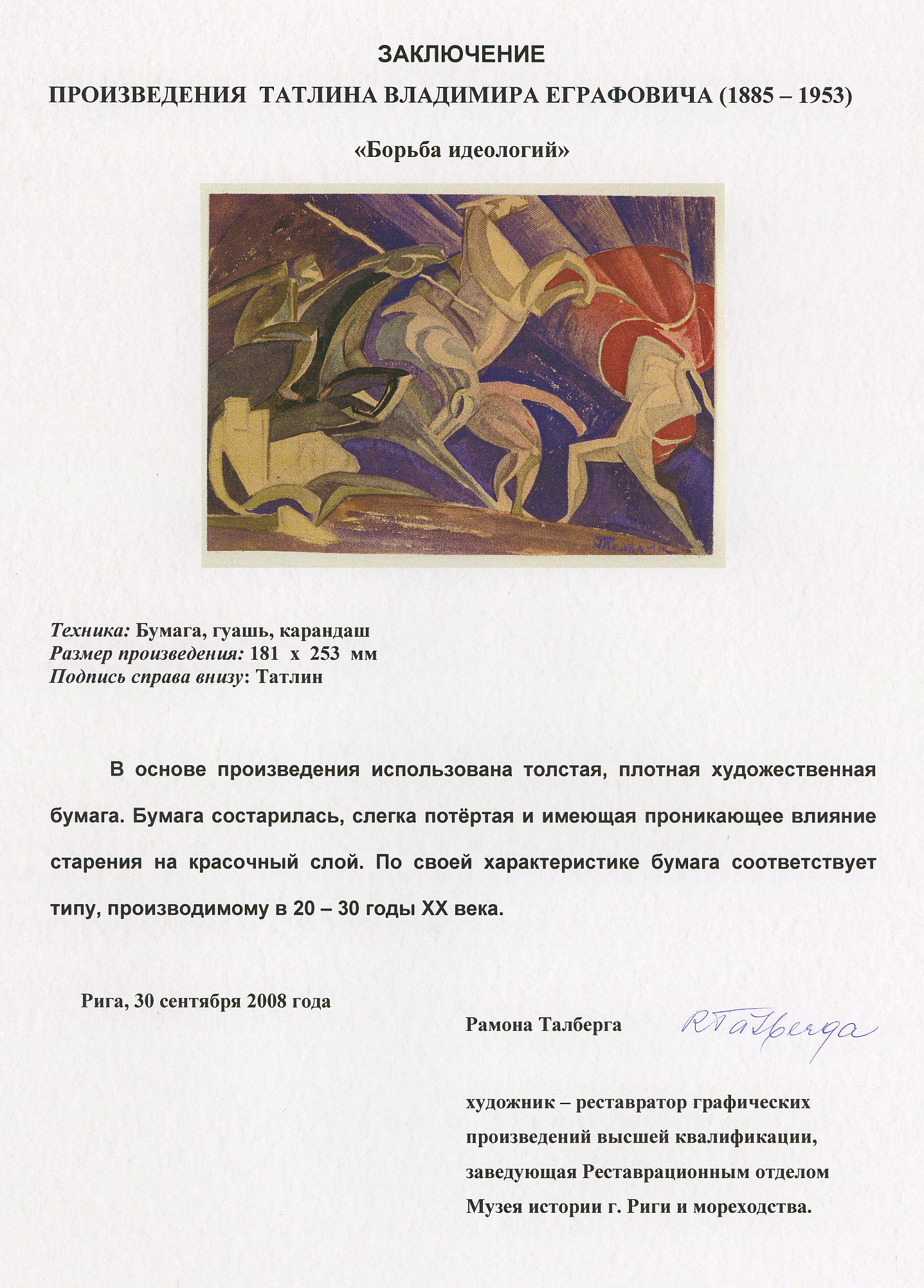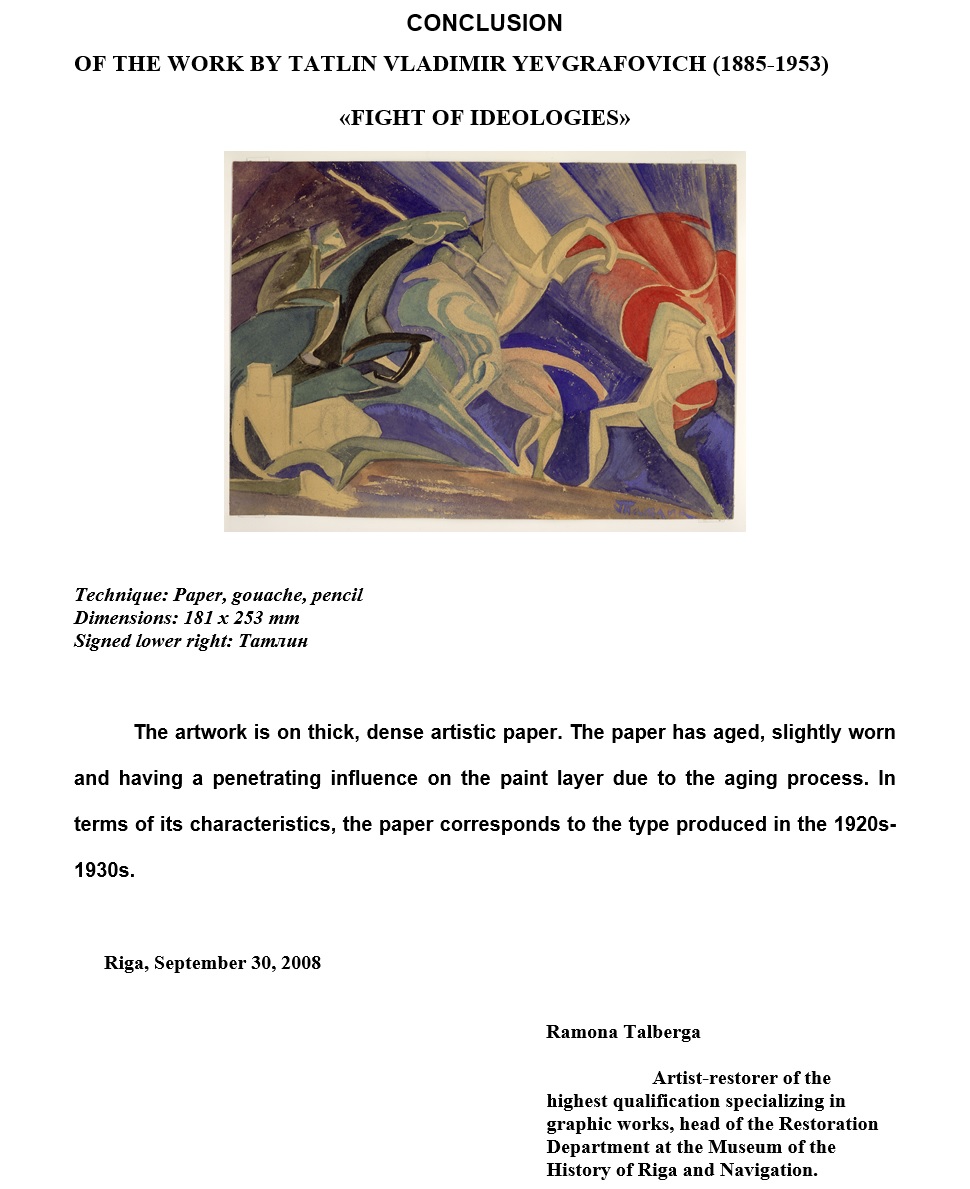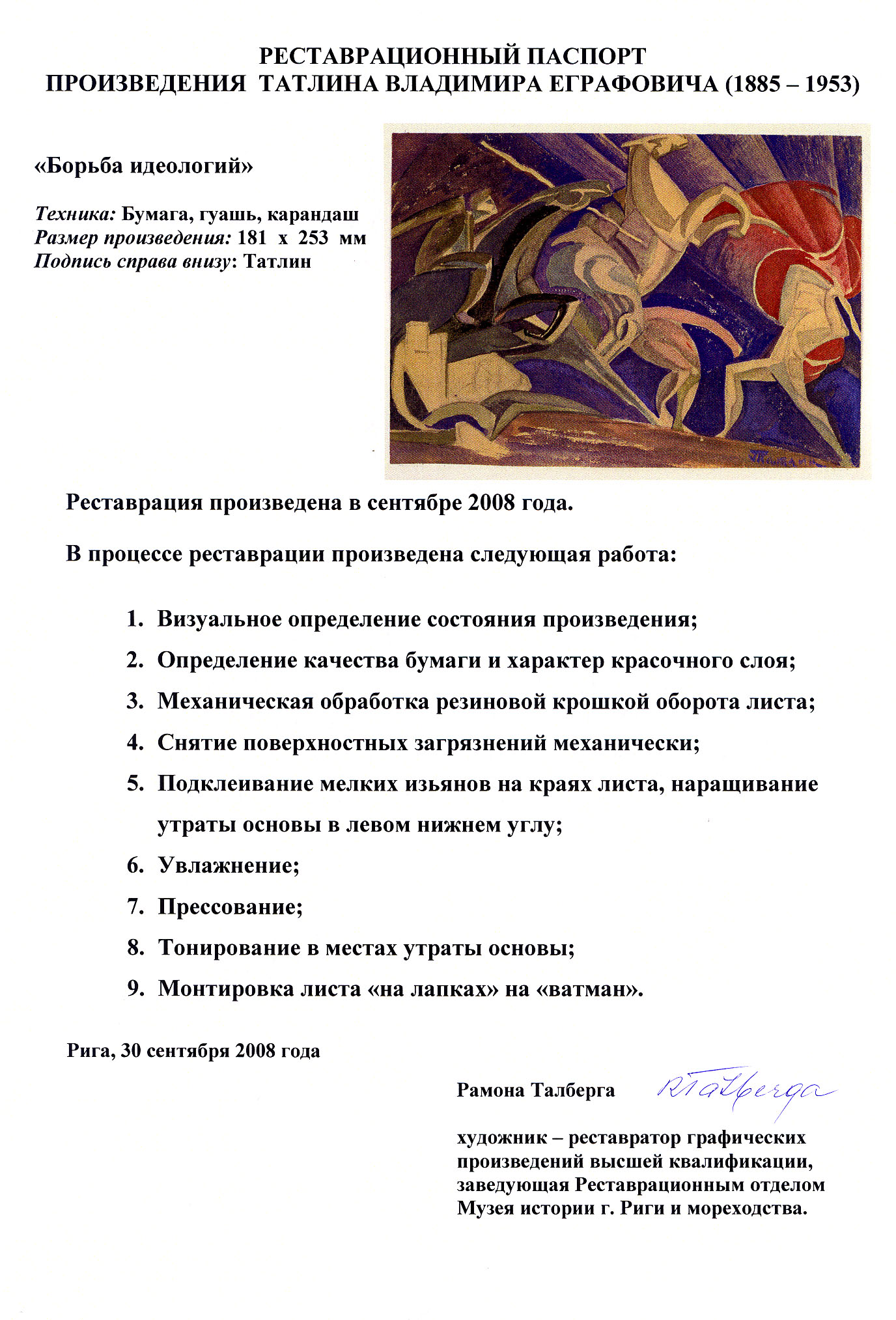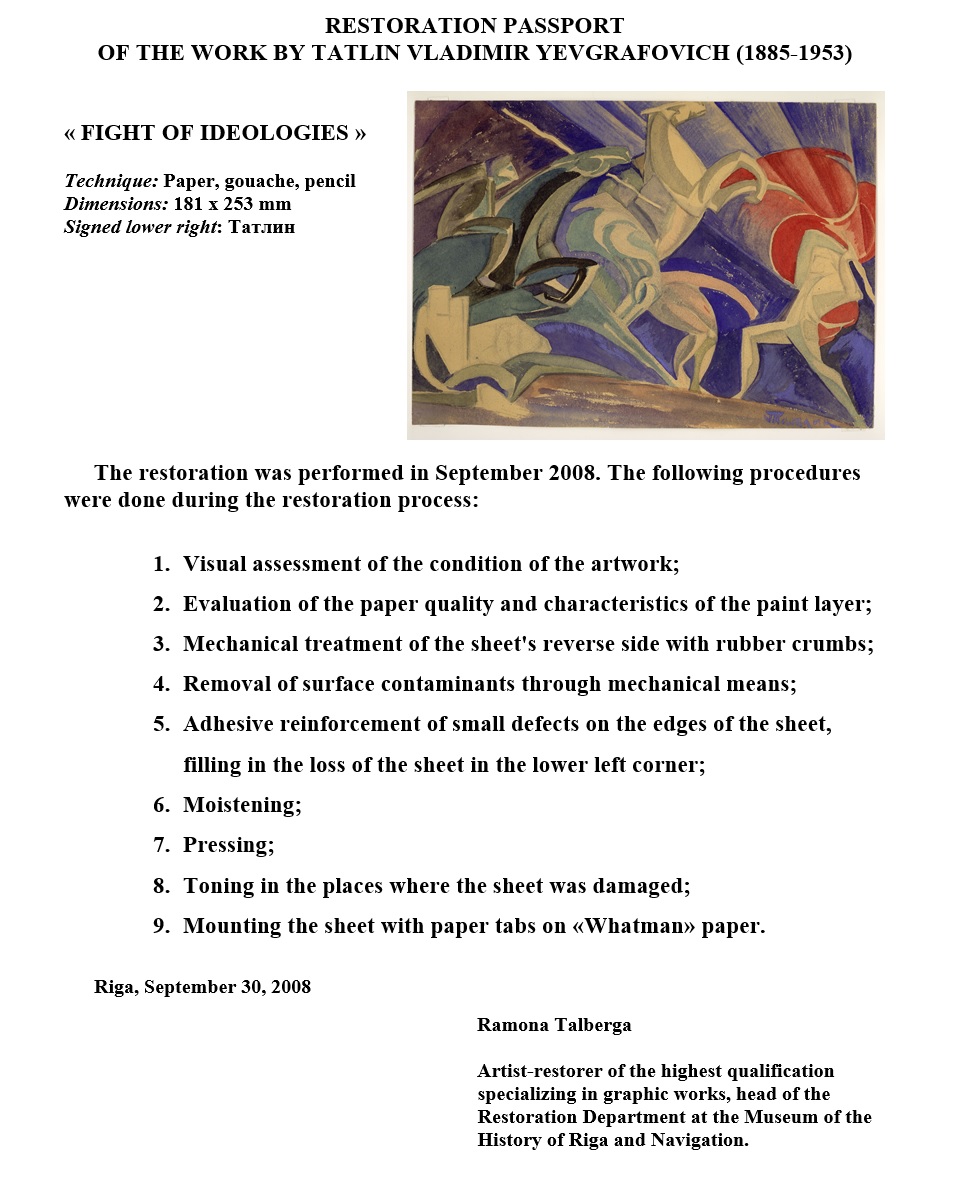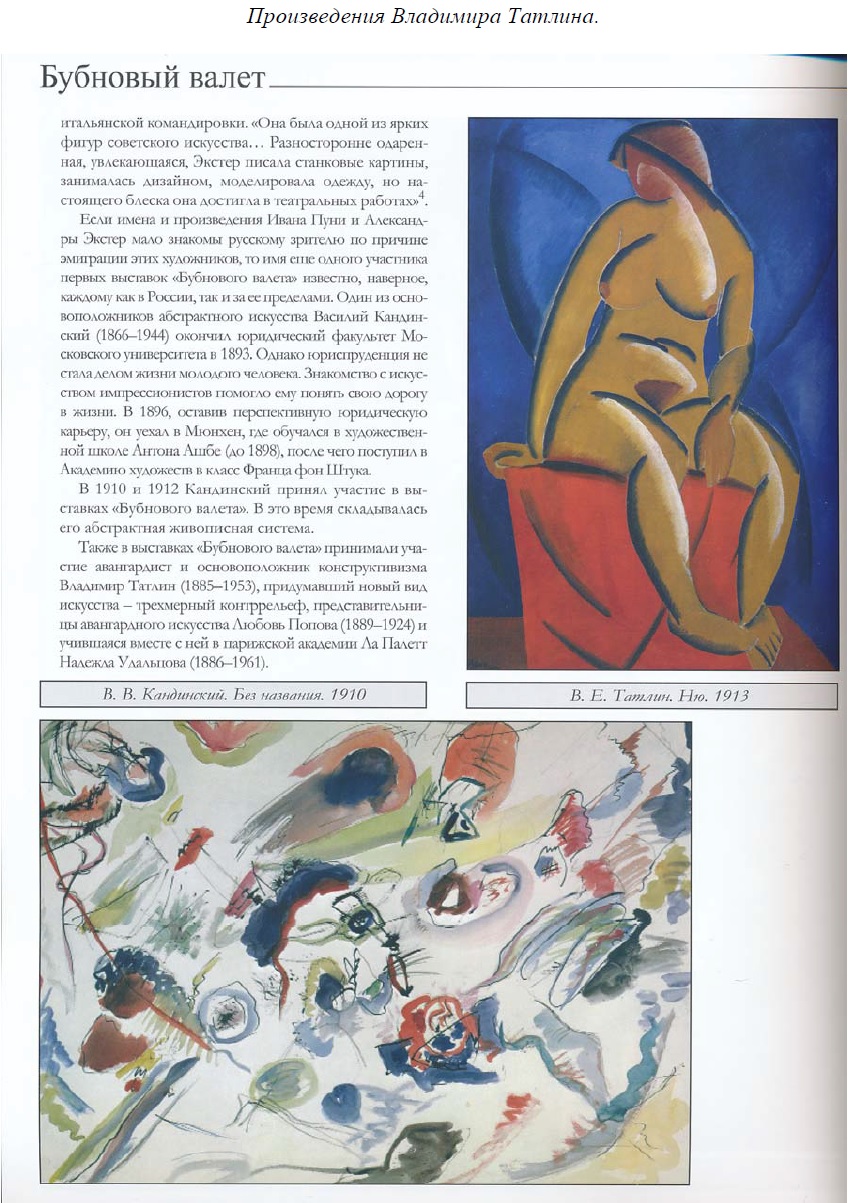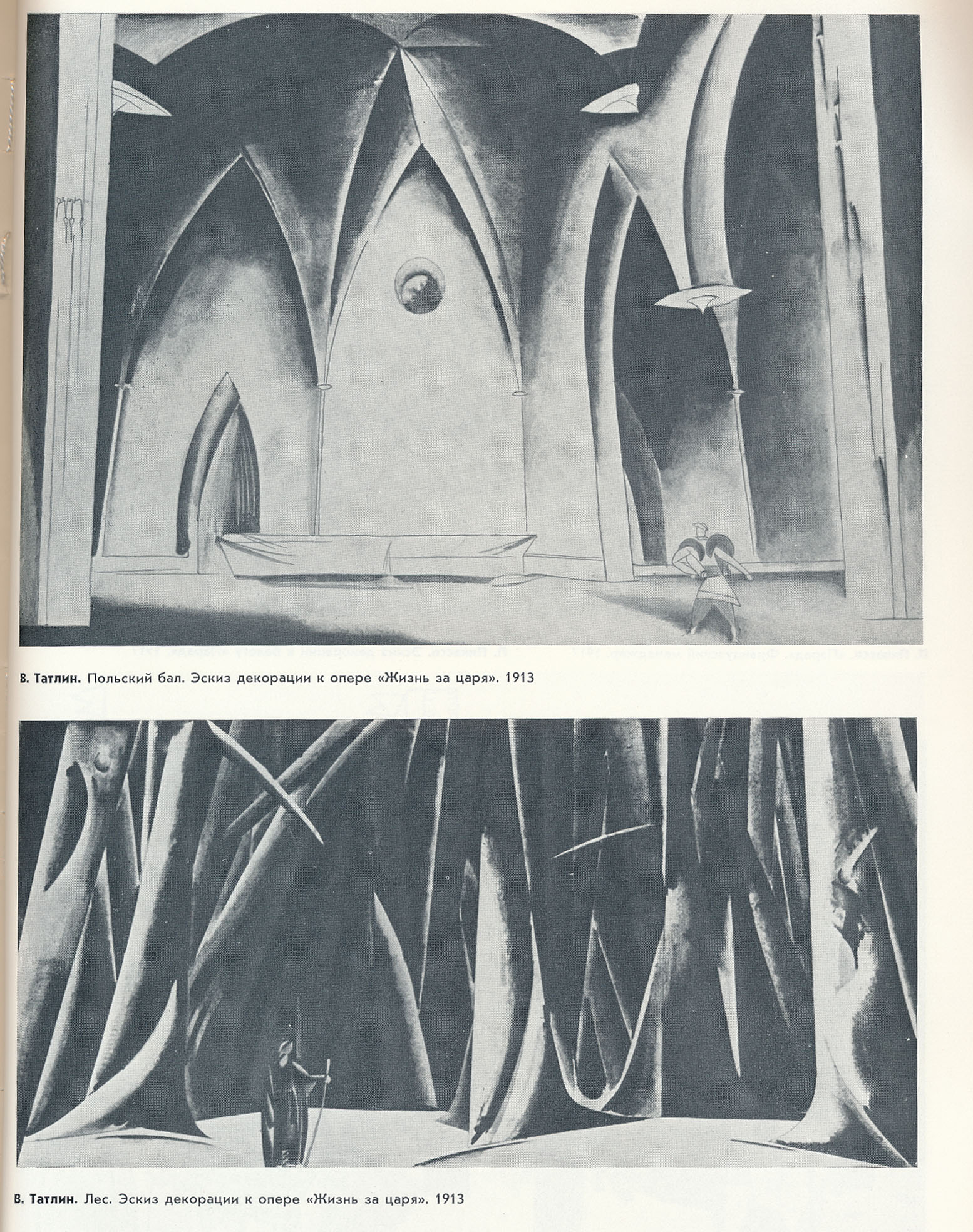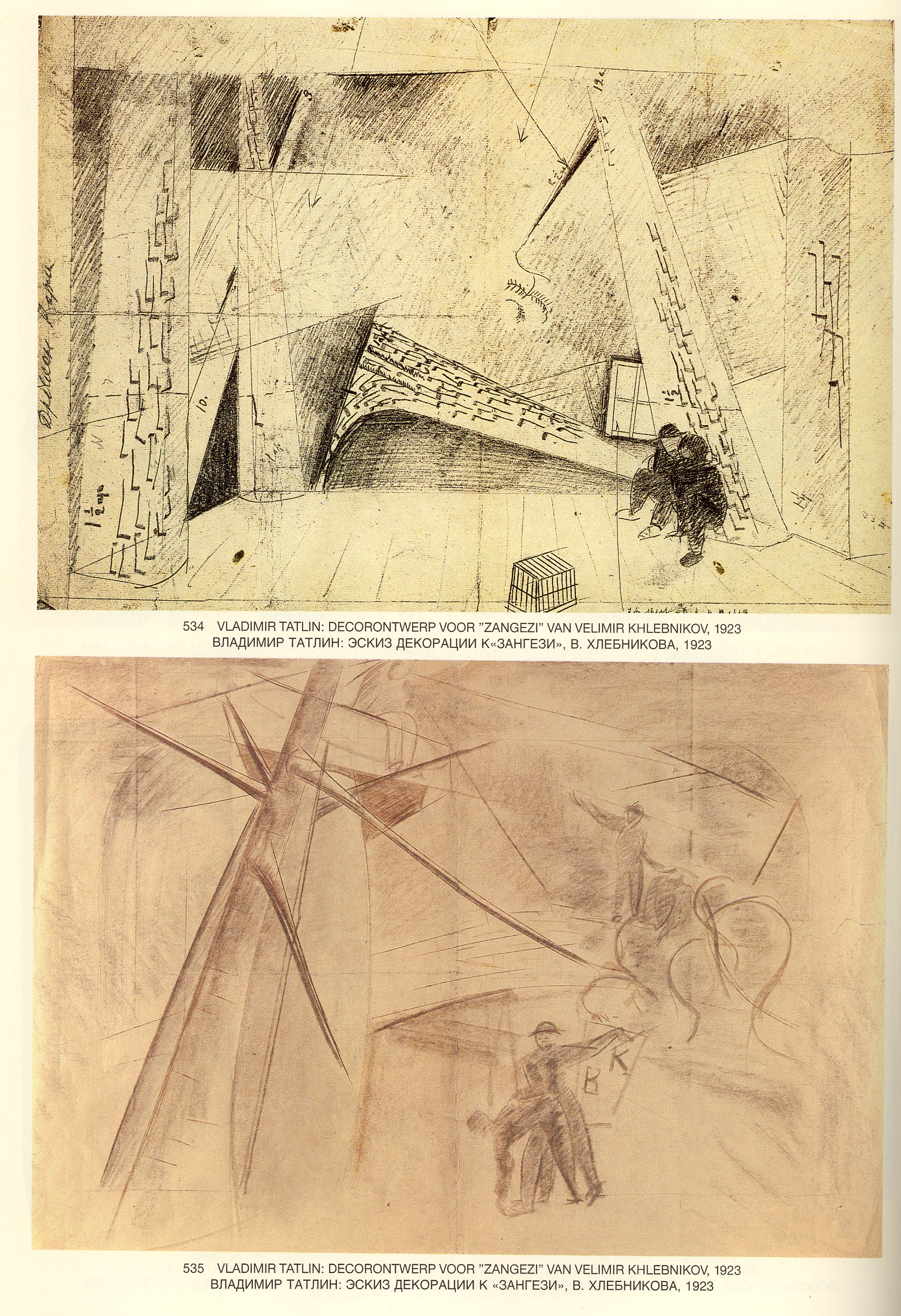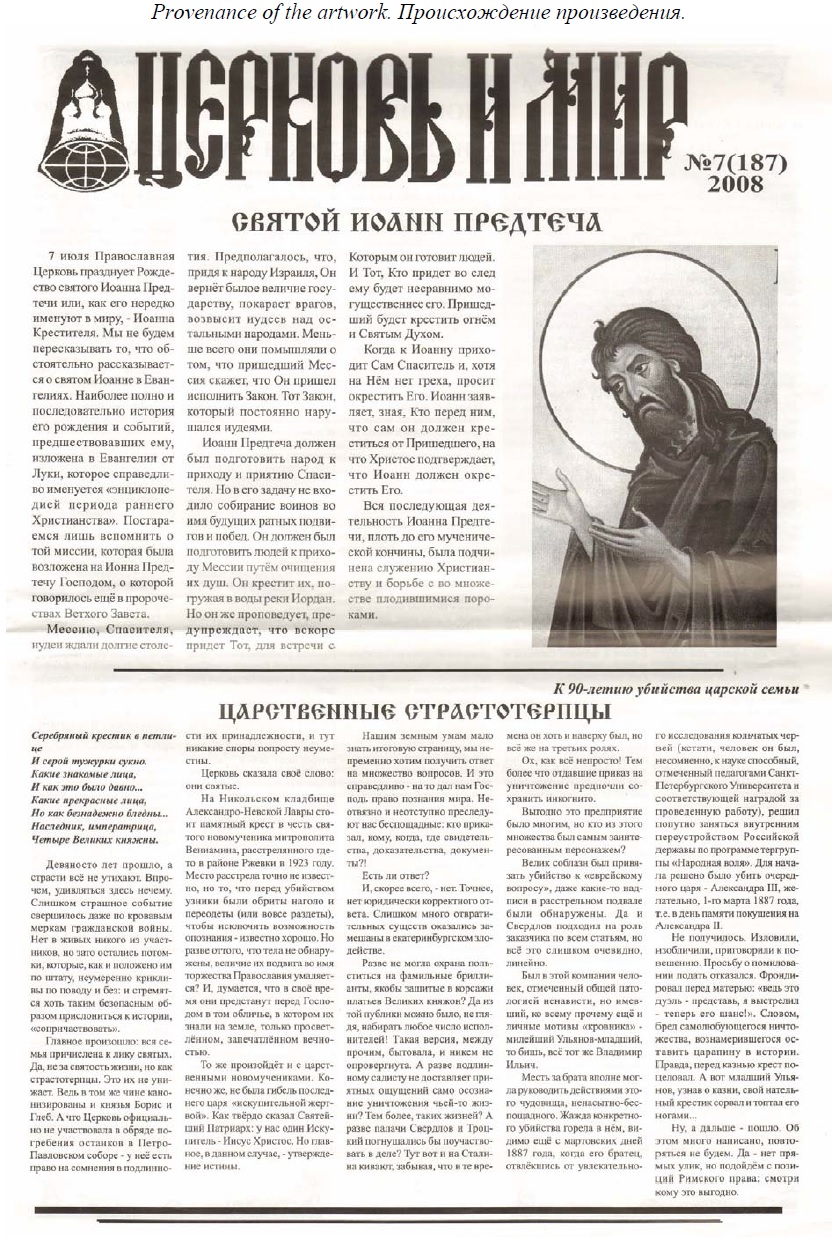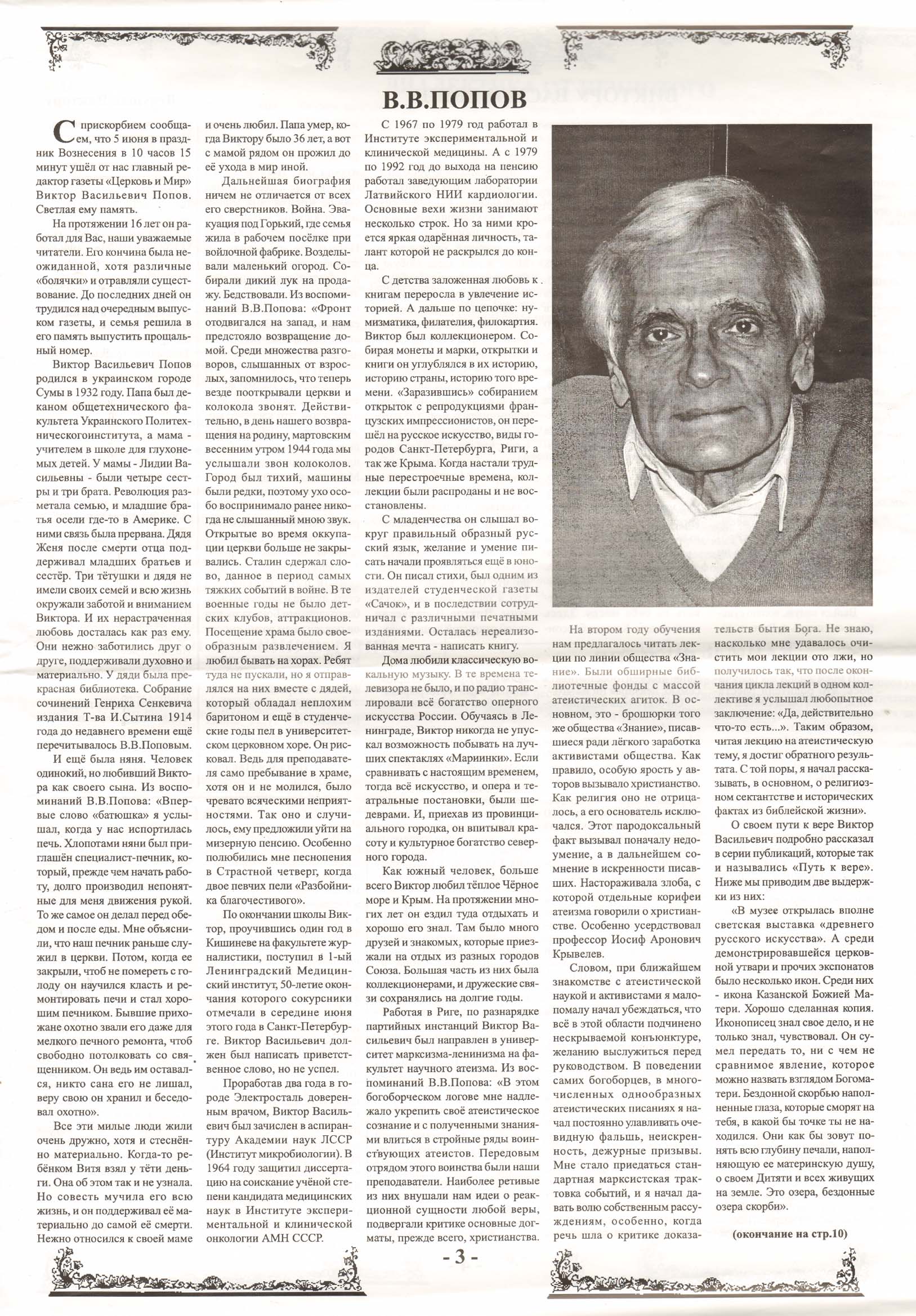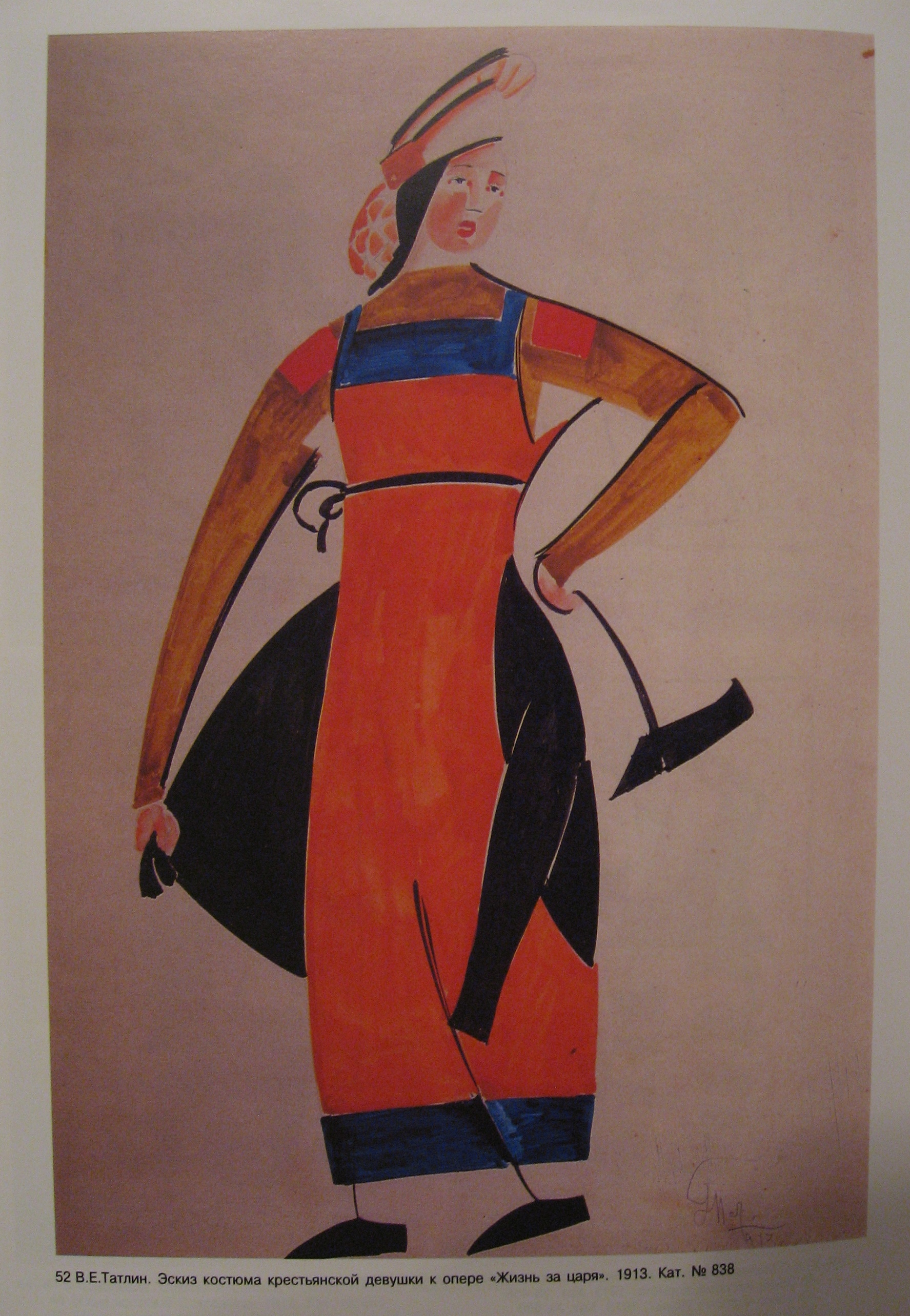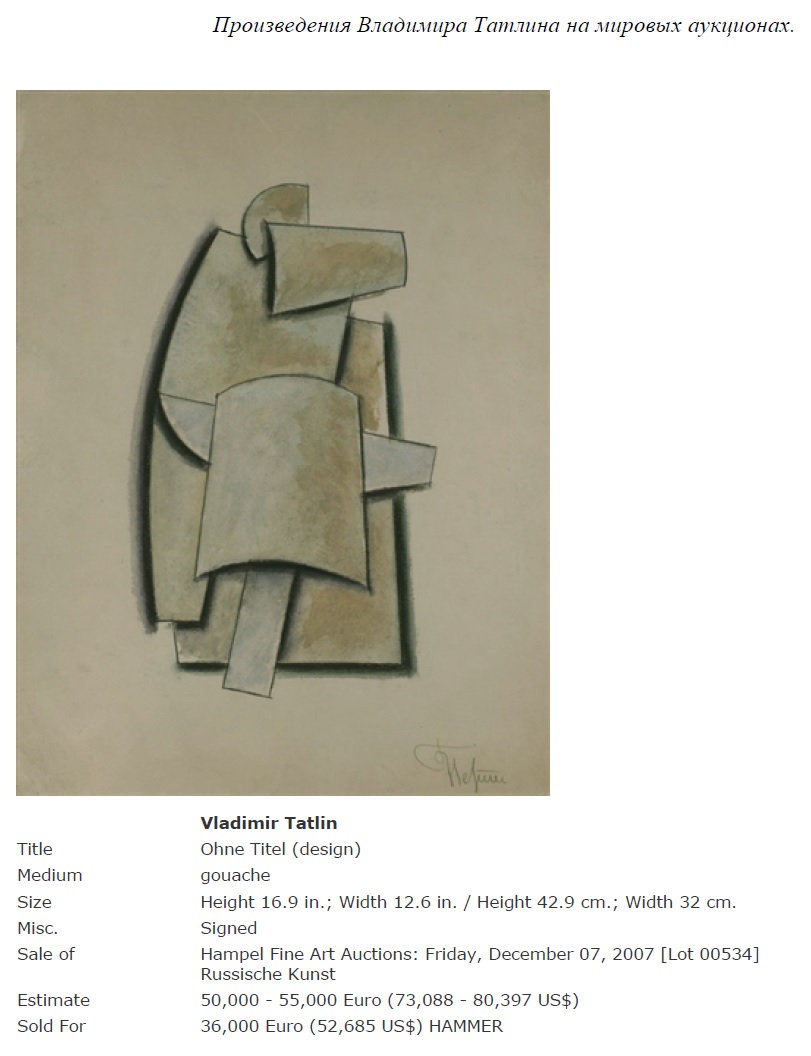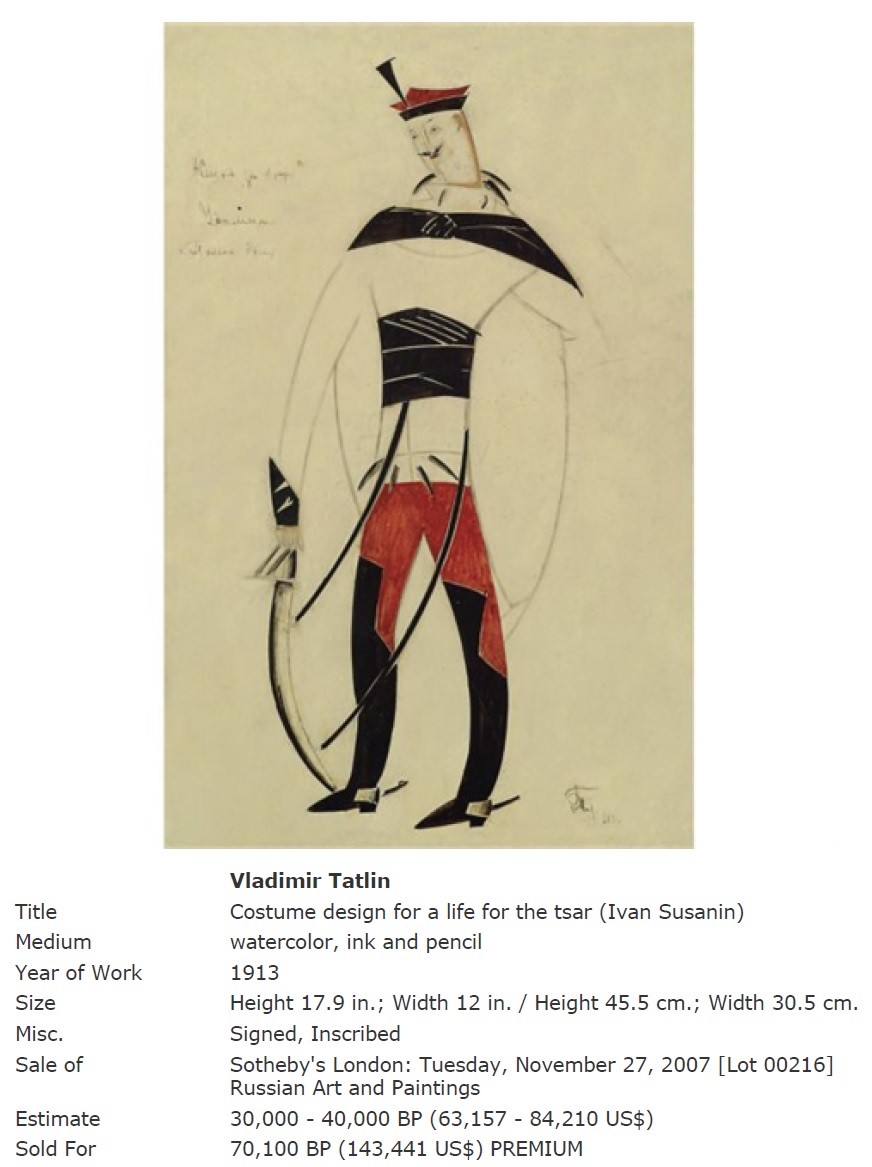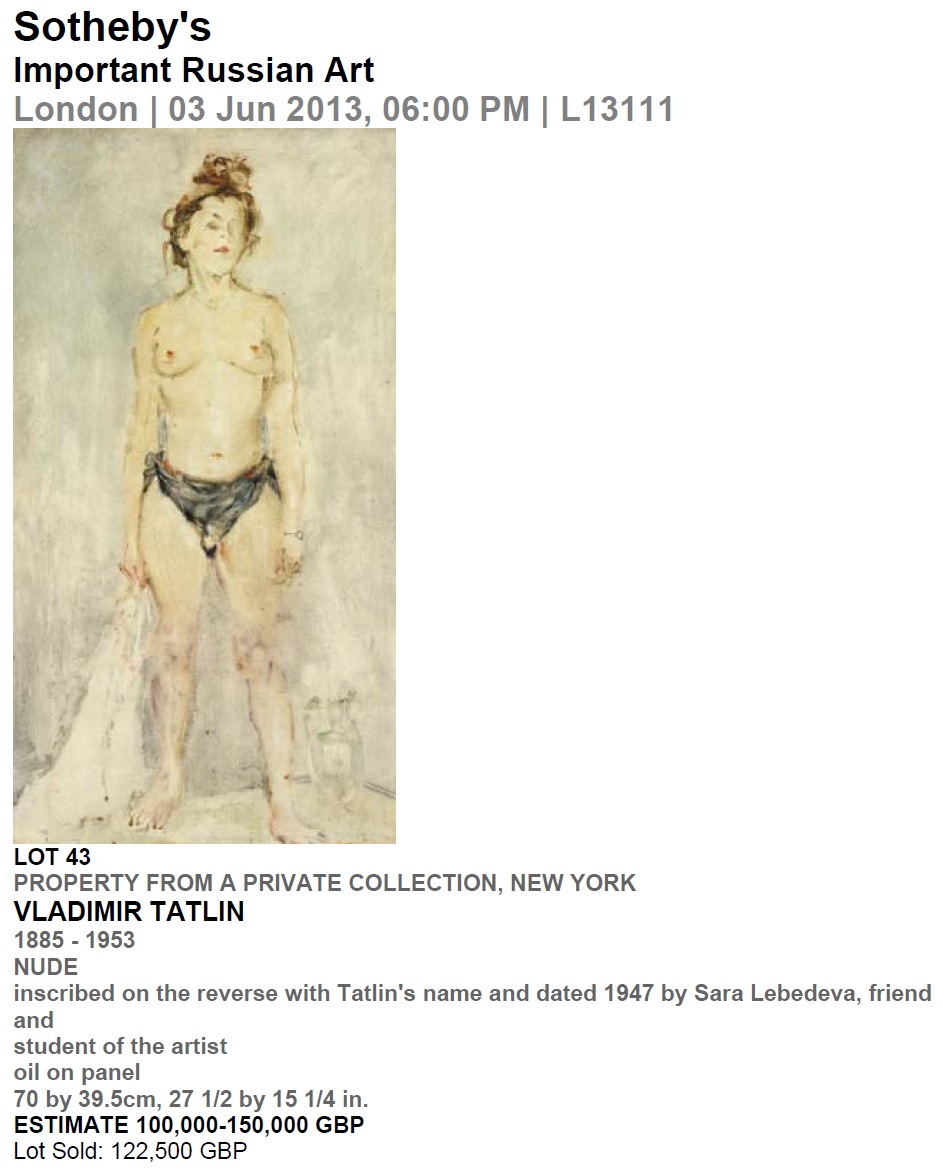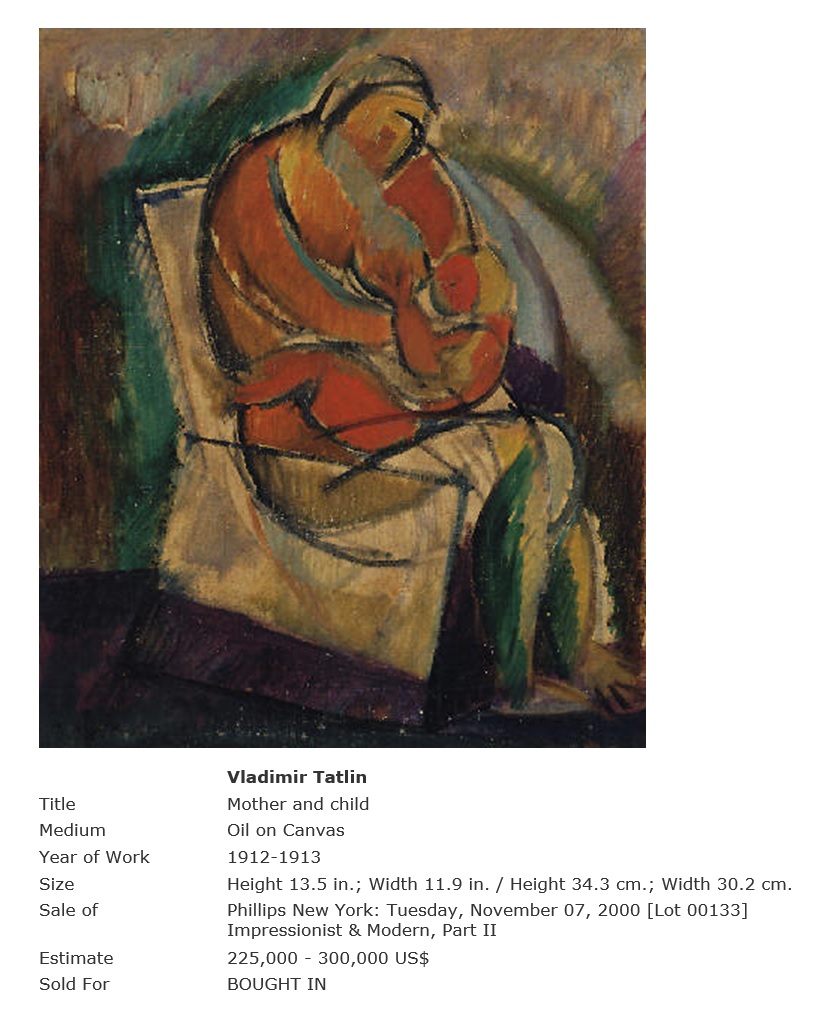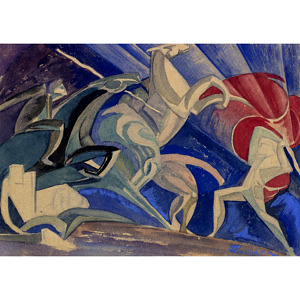Tatlin Vladimir Yevgrafovich
28 December 1885 (Kiev, most sources indicate Kharkov) – 31 May 1953 (Moscow)
Painter, graphic artist, architect, set designer
He went to school in Kharkov, ran away from home, sailed to Bulgaria and Turkey as a cabin boy. Around 1902 he moved to Moscow and painted icons for money there. In the same year he started to study at Moscow School of Painting, Sculpture and Architecture. He was a pupil of K. A. Korovin, and V. A. Serov. He didn’t graduate. In 1904 he started to study at Penza Art School named after N. Seliverstov, learned from I.S. Goriushkin-Sorokopudov and A. F. Afanasiev.
In 1904 and 1908 he traveled by sea a few times to the Mediterranean countries, Egypt in particular. In 1909 he returned to Moscow School of Painting, Sculpture and Architecture where he met Burliuk brothers, M. F. Larionov, Vesnin brothers and other avant-garde artists.
In 1902 he exhibited his works in Salon 2, organised by V. A. Izdebski in Odessa. In 1902 he took part in Donkey’s Tail exhibition in Moscow. Tatlin illustrated a book by V. V. Hlebnikov – Mirskonca. From 1913 he was a member of Union of the youth (Soyuz Molodyozhi). In 1913 he visited Berlin and Paris where he met P. Picasso. On his return to Moscow he started to work on counter-reliefs. He created sketches of the costumes and scenery for the opera A Life for a Tsar by M. I. Glinka.
In 1915 he exhibited his reliefs and counter-reliefs at the exhibition Tram V in Petrograd. From 1915 to 1916 he took part in Petrograd exhibition 0, 10; he organised exhibition Store in Moscow. In 1917 he worked on the interior of the cafe Pittoresk in Moscow. In 1918 he became head of the art board of department of Fine arts at People’s Commissariat for Education (Narkompros). From 1918 to 1920 he taught at Higher Art and Technical Studio (Vkhutemas) in Moscow and from 1919 to 1924 he was a professor at Petrograd Art Studios. From 1921 to 1925 he was head of the department at the Museum of Art. From 1925 he taught at Petrograd Institute of Art. From 1925 to 1927 he was a professor of Kiev Art Institute. From 1927 to 1930 he was a Vhutein (Higher art-technical institute) professor in Moscow.
In 1919 he started to work on The Monument to the Third international, and in 1920 he showed the model of the monument in Petersburg and Moscow. In 1925 at the International exhibition in Paris he received a gold medal. In 1923 he designed the stage for the poem Zangezi by V. V. Hlabnikov. From 1924 to 1930 he worked on a glider set to motion by man (Letatlin).
From 1931 to 1933 he was a head of Research laboratory of plastic arts in Moscow. During the 30s and 40s of the 20th century he worked mainly as a theatre artist. He turned to figurative painting.
Tatlin’s work reflected in different fields of art. He is the creator of constructivism in Russia. It is hard to determine in which field he had had the most success, but it is certain that he was an innovator in every field. In drawing, architecture projects and in counter-reliefs Tatlin revealed a constructive basis of forming a composition. Interaction of construction and movement is the style-forming basis of his work. In easel painting and graphics, features of constructivism were combined with careful study of the experience of the Cubists and the plastics of Russian icon painting.
Tatlin’s works are a part of the State Tretyakov Gallery collection, State Museum of Fine Arts named after A. S. Pushkin collection in Moscow, State Russian Museum collection in St. Petersburg, and many other art museums in Russia and around the world.
